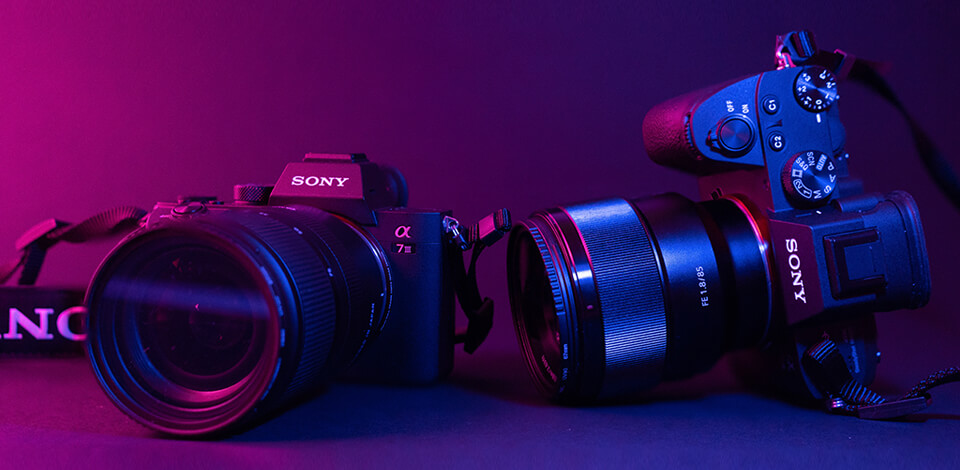
If you're a videographer who's always on the move, you may want to buy a mirrorless camera for videos. Such gear is lighter and more compact compared to DSLRs.
People of all skill levels prefer these cameras, especially in situations where keeping things quiet is key, such as when filming wildlife. Moreover, when it comes to filmmaking, you won't find anything that matches the speed and capabilities of mirrorless models.
When you're choosing a mirrorless camera for video, it's crucial to think about how clear and detailed your videos will be, and that's where resolution comes into play. Look for 4K video cameras because higher resolution means your videos will be sharper and more detailed.
Also, make sure a model has a quick and accurate autofocus system to keep your subject sharp, especially when there's movement in the frame.
Besides, it's worth paying attention to in-body stabilization. This feature does a great job at minimizing camera shake, especially in shots taken without a tripod. Though you can stabilize footage after shooting, a camera with excellent IBIS (Internal Body Image Stabilization) will produce videos that require less tweaking during editing.
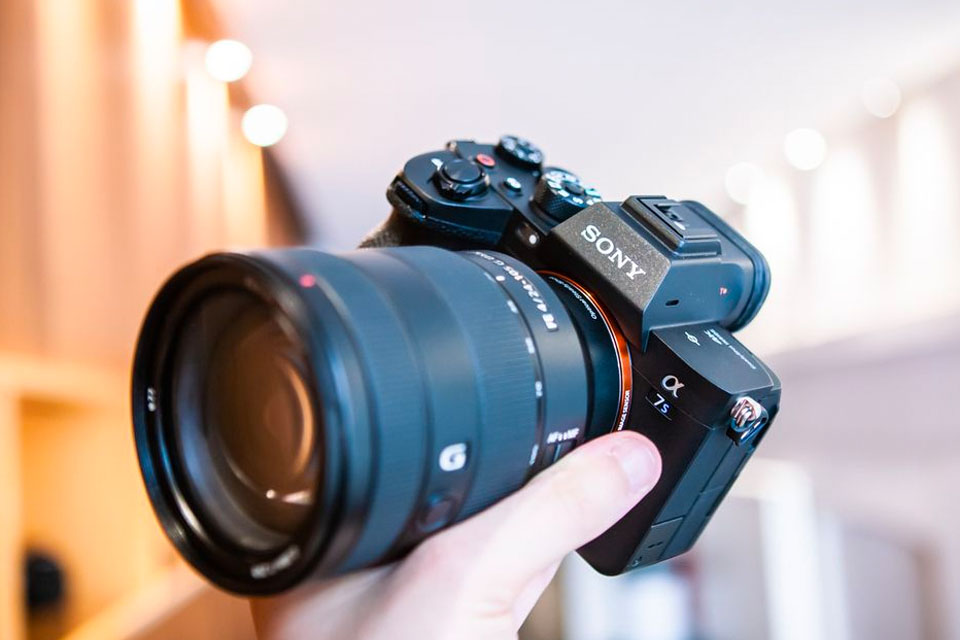
Sensor: Full-frame | Video Quality: 4K | Max. Frame Rate: 120p | Resolution: 12.1MP
The low-light shooting capabilities of the Sony A7S III are really something special, thanks to its native ISO sensitivity going up to 102,400. I've taken this mirrorless video camera to some pretty dim places, and I have to say, the level of detail it captures at high ISO settings is mind-blowing.
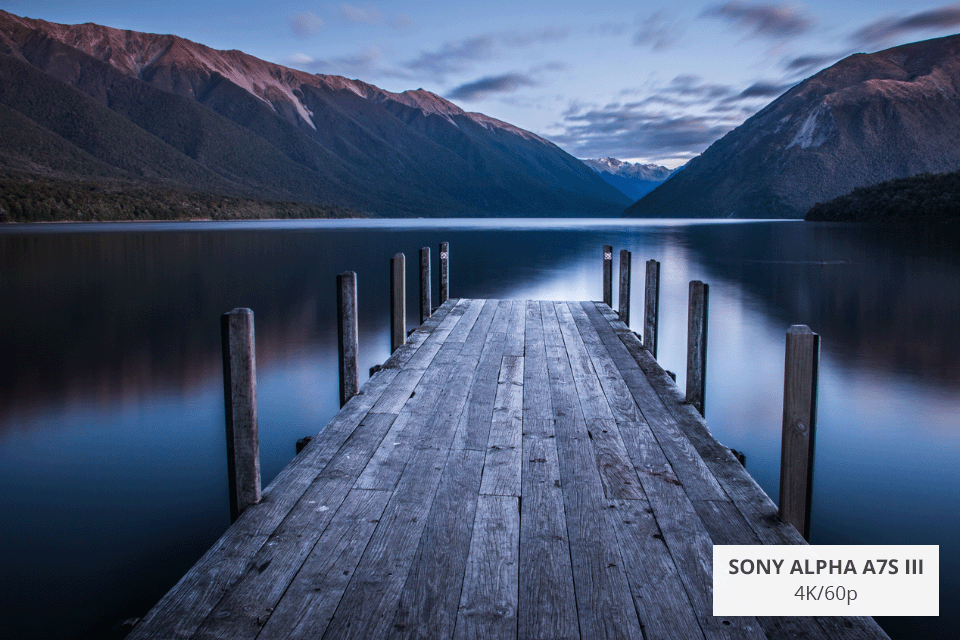
Another thing that caught my attention is how effortlessly this camera handles UHD 4K at 120p – no pixel-binning or cropping hassles.
Moreover, the articulating LCD screen and super clear OLED viewfinder make shooting from different angles very easy. But this full-frame camera doesn't come with a built-in ND filter, and that may be a bit disappointing for some videographers.
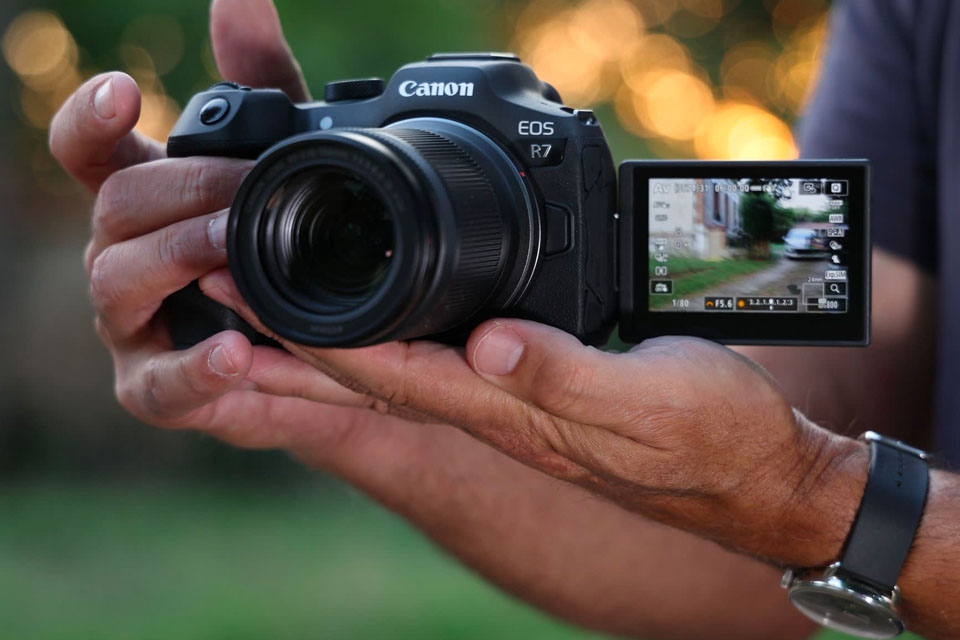
Sensor: APS-C | Video Quality: 4K | Max. Frame Rate: 60p | Resolution: 32.5MP
Canon EOS R7 is a top-tier APS-C mirrorless video camera that can shoot in 4K, has an advanced subject recognition system, and strong image stabilization.
This Canon camera for video is capable of capturing footage in 4K at up to 60p. In addition, it features an electronic viewfinder that offers a stunning 100% coverage.
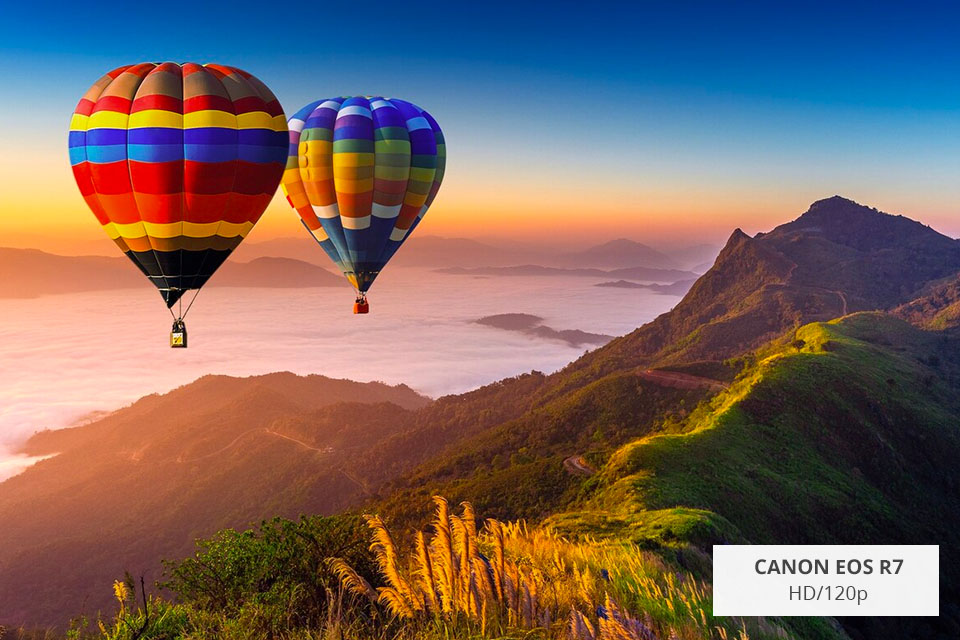
As for connectivity, there are Micro HDMI, USB-C 3.2 Gen 2, and standard headphone and mic jacks. There's no PC Sync port, and that may be a problem for those videographers, who rely on external recorders.
You should also be mindful of rolling shutter issues, especially when you're recording in 1080p.
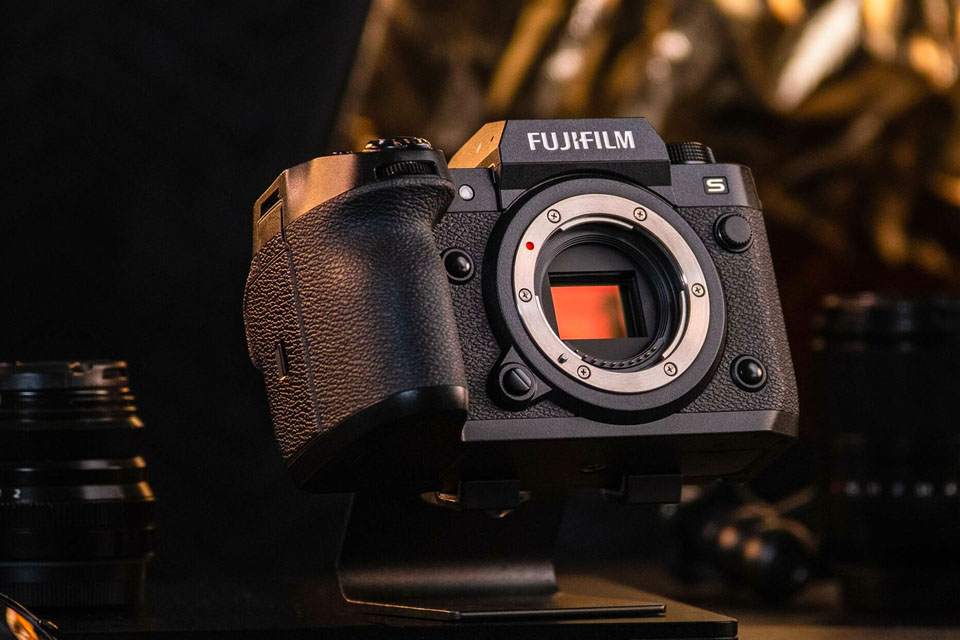
Sensor: APS-C | Video Quality: 6K | Max. Frame Rate: 240p | Resolution: 26.1MP
With Fujifilm X-H2S, you can record videos in both 4K and 6.2K, which is quite impressive for an APS-C camera. What's even better is that it comes with a full-size HDMI port. It means you can push even higher resolutions to an external recorder.
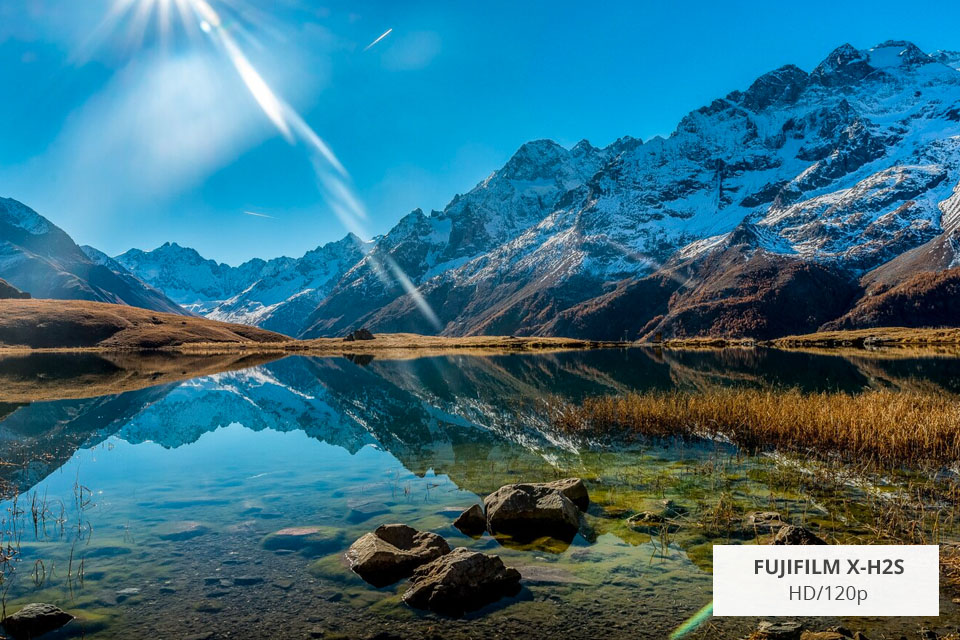
The autofocus itself is a real perk. It can track a variety of things, from human faces to speedy vehicles.
The mirrorless camera video is pretty flexible and can come in handy in various shooting scenarios. However, you'll have to manually choose your tracking subjects. It can’t automatically recognize each and every subject at once. Another thing that may put off some users is a somewhat steep price tag.
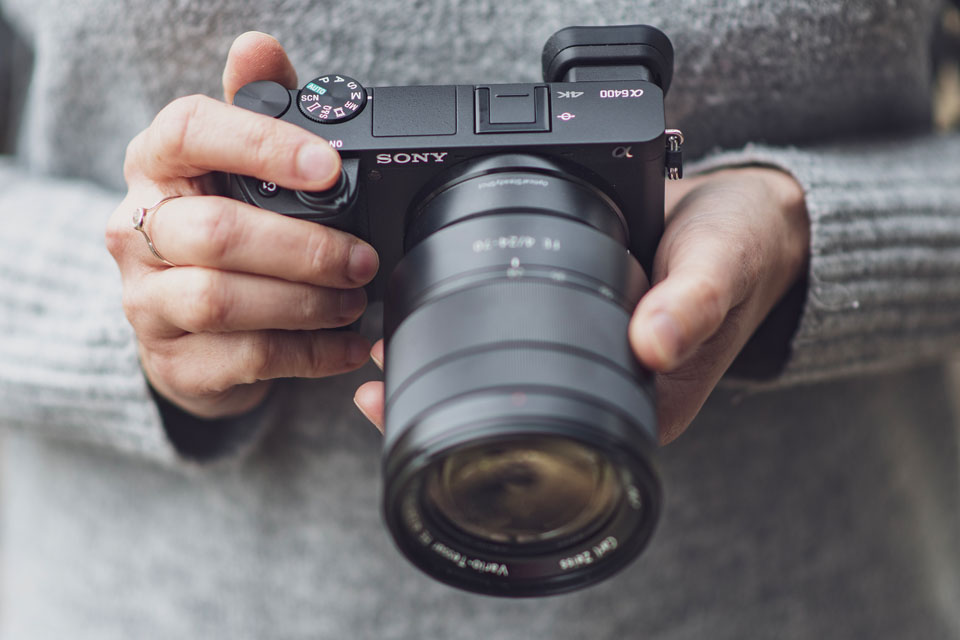
Sensor: APS-C | Video Quality: 4K | Max. Frame Rate: 120p | Resolution: 24.2MP
Sony A6400 is really deservedly called one of the best mirrorless cameras for videography thanks to its impressive autofocus and real-time tracking features. It maintains sharp focus across almost any part of the frame.
This Sony camera is capable of capturing crystal-clear 4K footage and it down samples from 6K. Without pixel binning, you get exceptionally clean footage.
So, the camera’s high price is justified. Fans of slow-motion videos, will surely admire its remarkable 120 frames per second in Full HD.
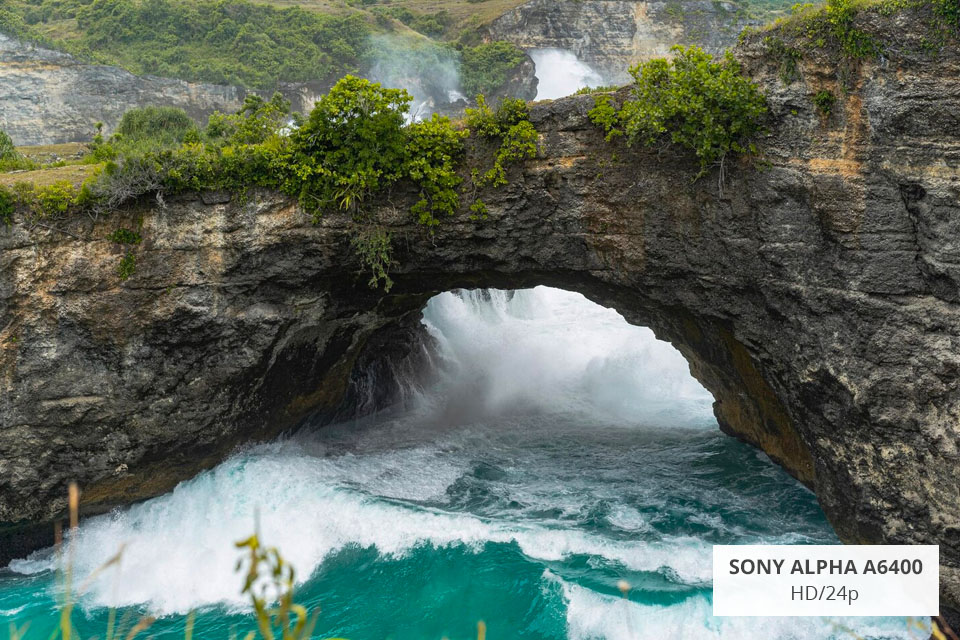
For vloggers, a flip-up 180-degree screen will be a real find. But the lack of in-body stabilization in this mirrorless model seems like a huge sacrifice. If you're into handheld shooting, you should consider investing in quality lenses with optical stabilization or getting yourself a gimbal.
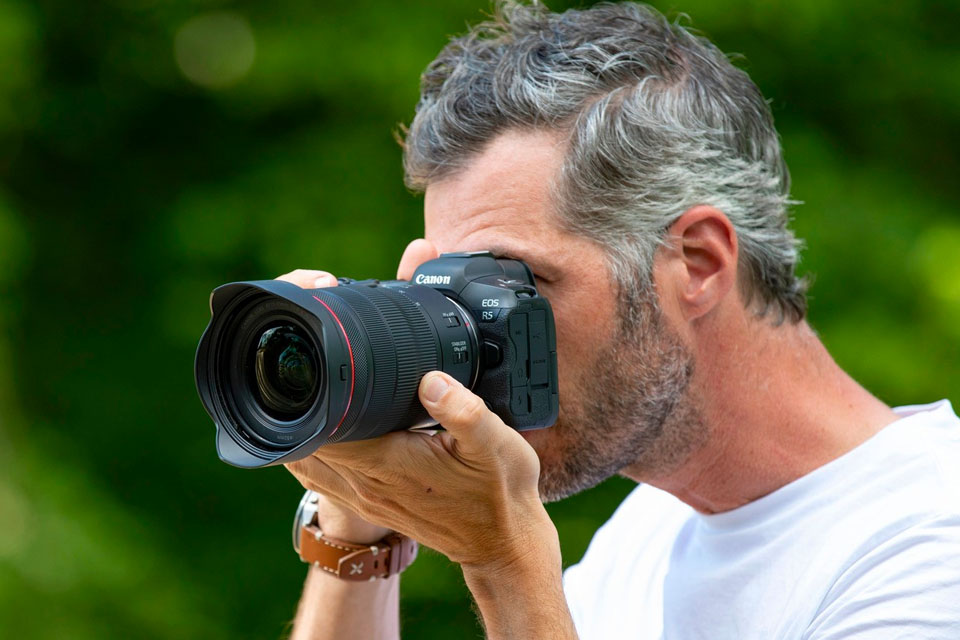
Sensor: Full-frame | Video Quality: 8K | Max. Frame Rate: 120p | Resolution: 45MP
Packed with 5,940 autofocus points for taking pictures and 4,500 for shooting videos, the Canon EOS R5 is practically a focus maestro. I've used this Canon camera in different situations, capturing everything from high-speed sports action to genuine street moments, and it always shows wonderful results.
The Dual Pixel CMOS AF II system is a huge advantage, especially in low-light conditions where other video mirrorless cameras may fail to deliver crisp results.
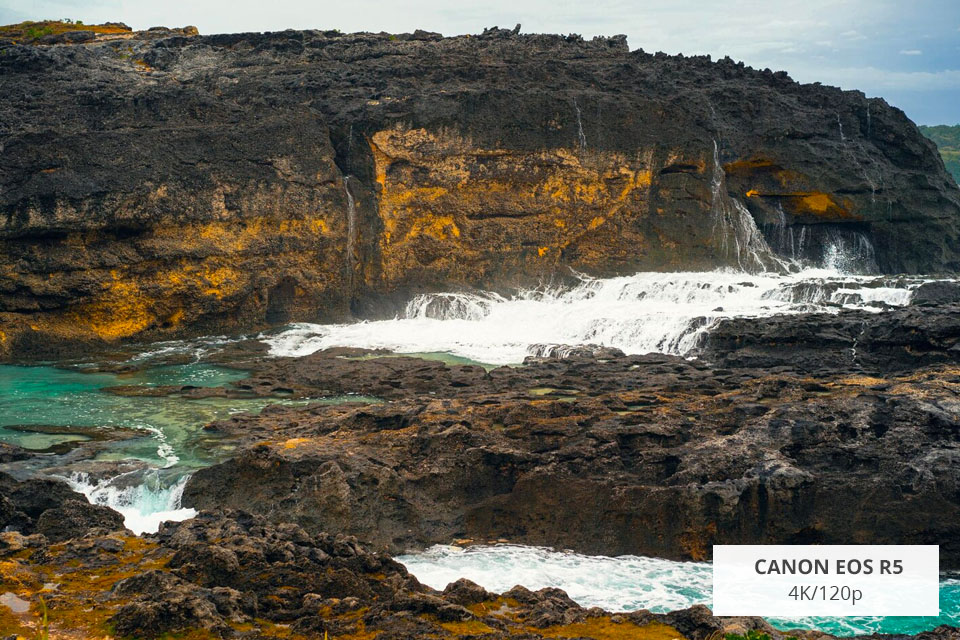
Though you may not use the 8K video recording feature every day, it ensures this camera stays relevant in the years to come. Plus, with 4K at 120fps, your slow-motion shots will be extremely smooth.
The possibility to pair this video mirrorless camera with different lenses is another major benefit. Just connect an adapter, and use lenses from other brands. This is especially handy for videographers who have a mix of gear from different camera brands.
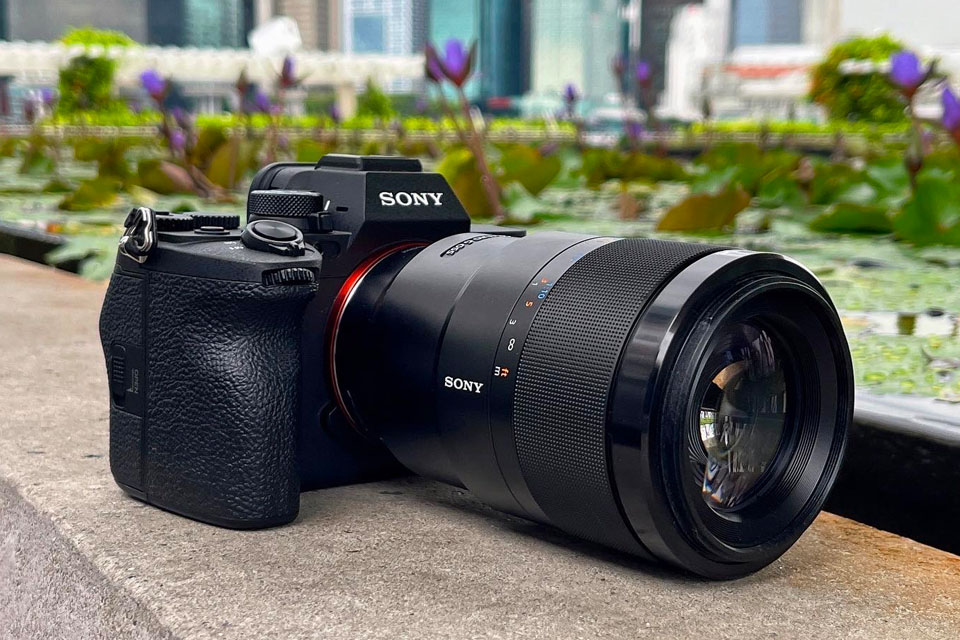
Sensor: Full-frame | Video Quality: 4K | Max. Frame Rate: 60p | Resolution: 33MP
One of the standout features of Sony A7 IV is breathing compensation. This mirrorless model can maintain a steady angle of view while adjusting focus.
If you want your videos to have a cinematic flair, this is the best mirrorless for video you can find. However, to get the most out of this feature, you need to attach specific Sony lenses. Thus, the effectiveness may vary depending on the lenses you use.
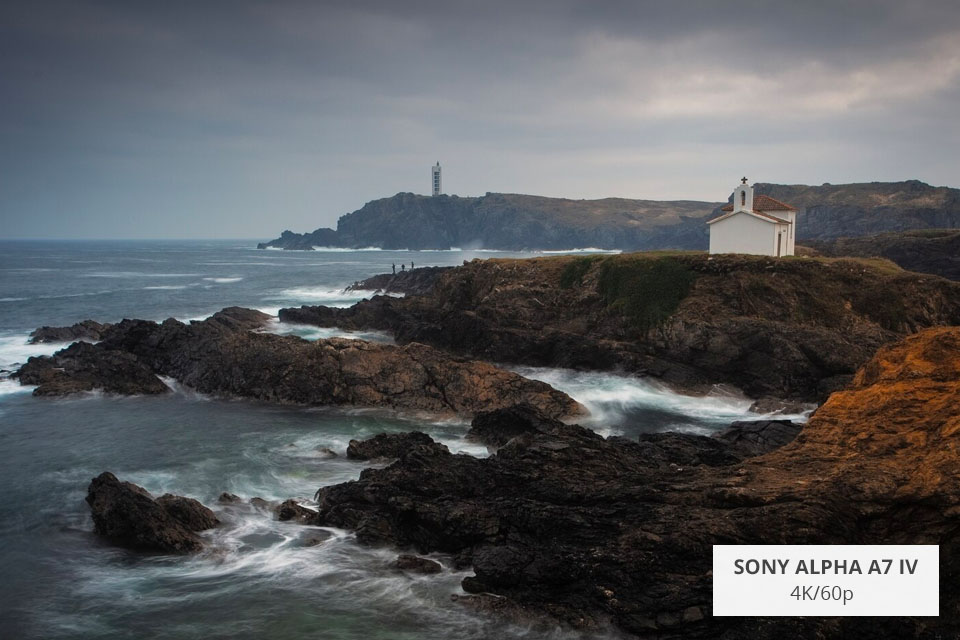
This camera with high dynamic range can capture 4K footage at a smooth 60 frames per second.
Another cool thing is 10-bit 4:2:2 color profile. It means your footage will be bursting with vibrant colors, and you'll be able to correct them even further during editing. Plus, with a whopping 13 stops of dynamic range, you may totally forget about overexposure.
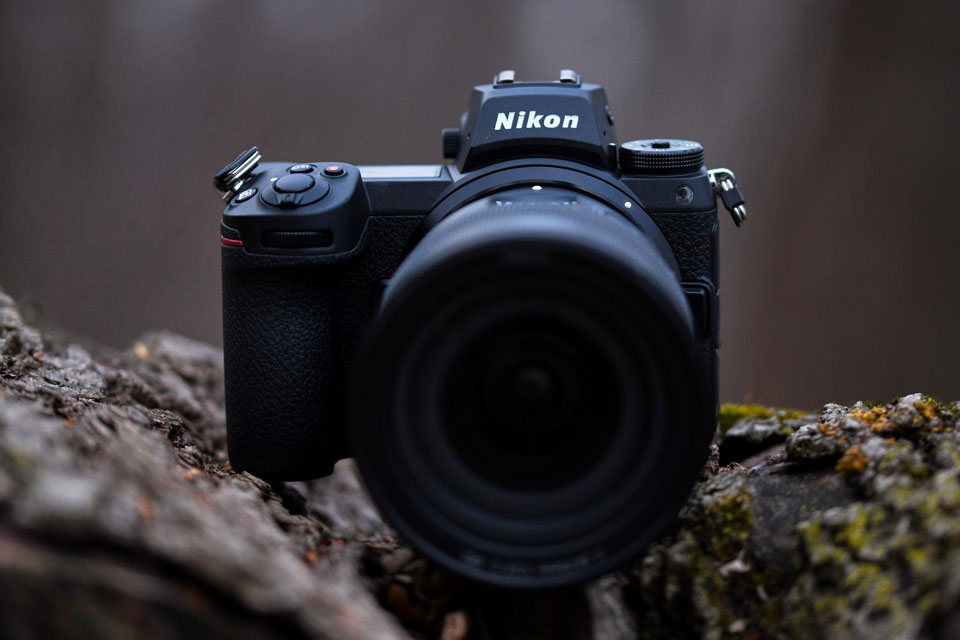
Sensor: Full-frame | Video Quality: 4K | Max. Frame Rate: 60p | Resolution: 24.5MP
Nikon Z6 II boasts a fantastic full-frame sensor that really shines in low-light situations. You will receive clear and sharp footage, even when you're shooting as the sun goes down.
It is capable of recording 4K at 60 frames per second. Besides, there is a handy 3.2-inch LCD screen on the back of the camera for easy recording control.
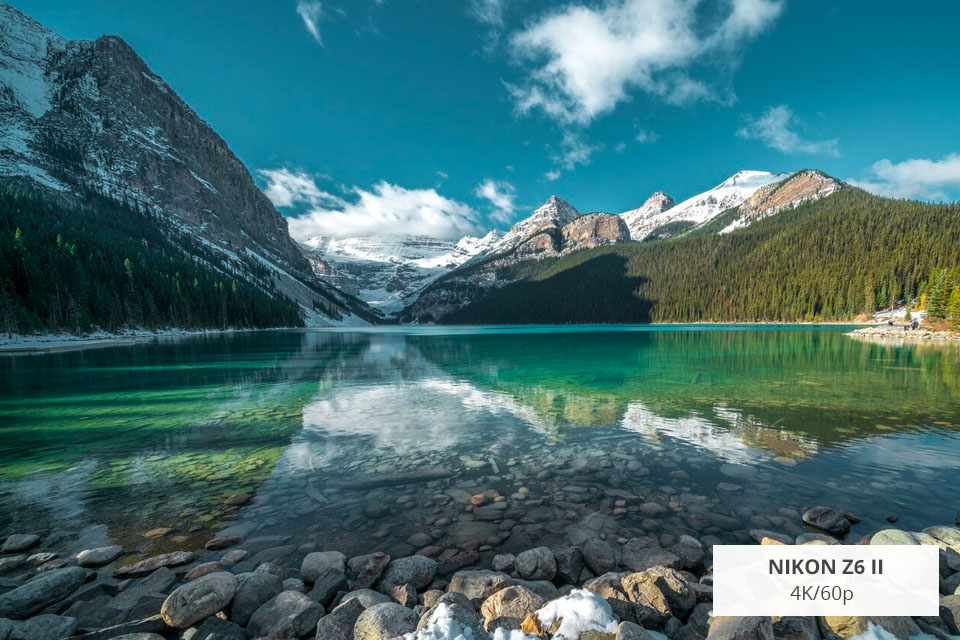
The autofocus on this mirrorless model works faster than the original Z6. This is especially evident when it locks on faces and eyes from a distance. It may not be the absolute best mirrorless camera for video in its class, but it's no slouch either.
Just remember that this Nikon video camera tends to heat up a bit during extended video shoots, and that can lead to the display blacking out.
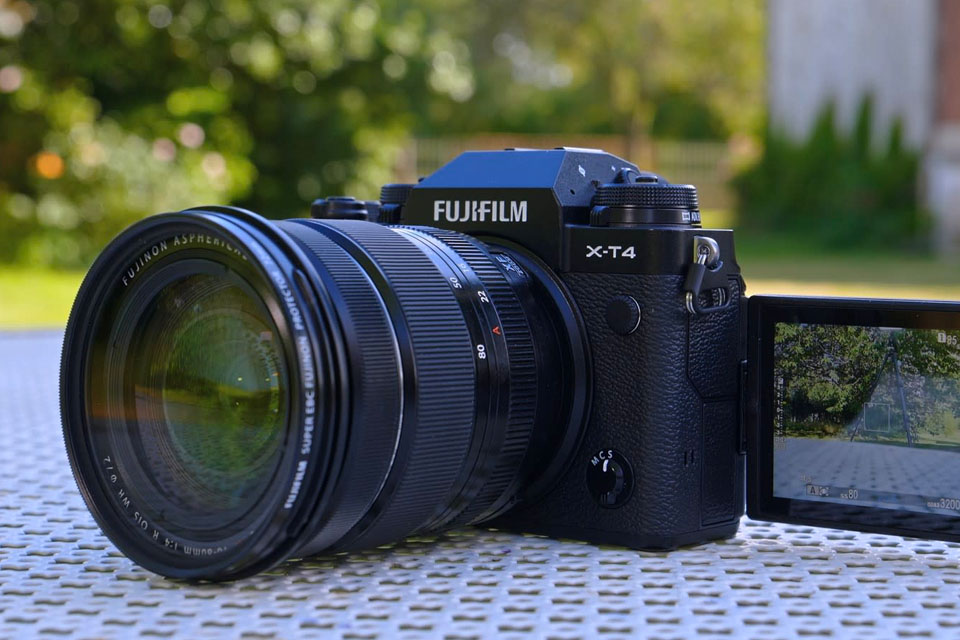
Sensor: APS-C | Video Quality: 4K | Max. Frame Rate: 240p | Resolution: 26.1MP
Fujifilm X-T4 is a camera for photography that excels both in taking images and capturing ultra-smooth 4K video at 60 frames per second. The film simulation feature is worth mentioning separately. With it, you can add a unique cinematic flair to your footage.
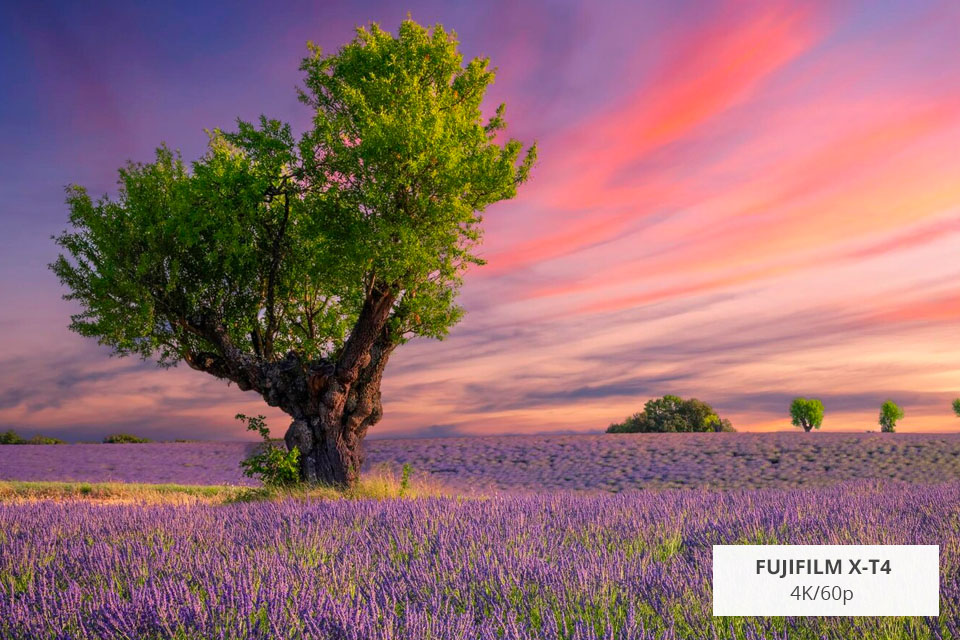
Users particularly praise the IBIS (In-Body Image Stabilization). It's not a typical stabilizer but a five-axis system, offering up to 6.5 stops of stabilization. This means you can take images or record videos without a tripod and still receive clear, shake-free shots.

Sensor: APS-C | Video Quality: 4K | Max. Frame Rate: 30p | Resolution: 20.9MP
Nikon Z fc is fantastic for people who seek the tactile experience of a mirrorless models and want to shoot videos as well. This mirrorless camera for travel is super portable, which is a big deal for me since I'm constantly on the move.
Besides, it is perfect for vlogging, offering 4K UHD, continuous autofocus featuring eye detection, and even a built-in stereo microphone.
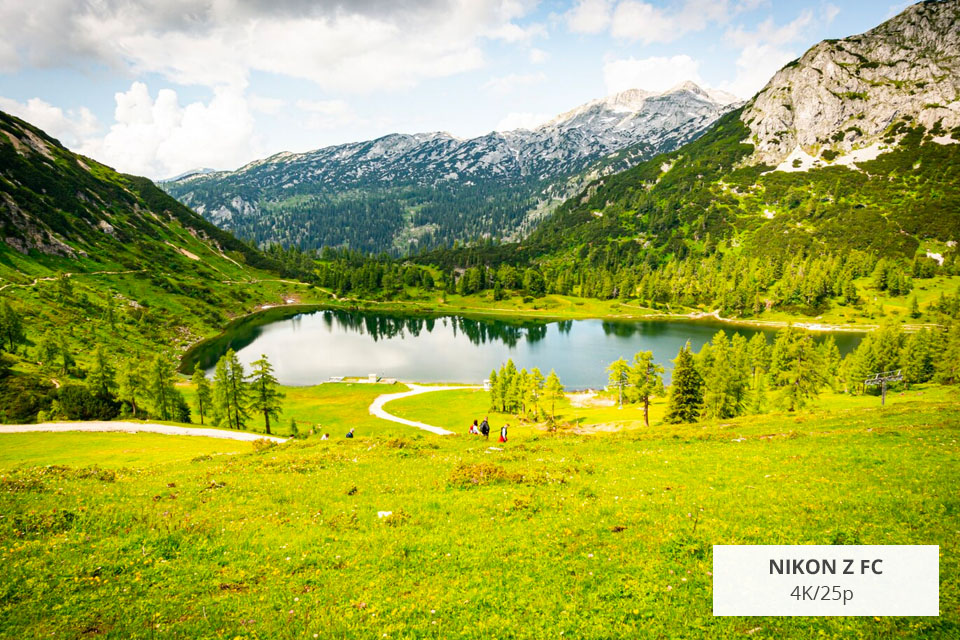
I'm really excited about the fully articulating screen. I believe it's a real plus for vloggers and those who like getting creative with their shots.
But here's the thing - this budget video camera relies on battery-powered image stabilization, and it doesn't quite match up to the rock-solid stability you get with a gimbal.
When I'm looking for a camera body, I focus on resolution, frame rates, autofocus accuracy, low-light performance, codec choices, lens compatibility, and the overall design. These factors are very important.
Budget is another aspect. For those just learning the ropes of videography, starting with a budget filmmaking camera can be a smart move. I suggest prioritizing features that align with your videography needs, so you're not shelling out extra for functions you won't really use.
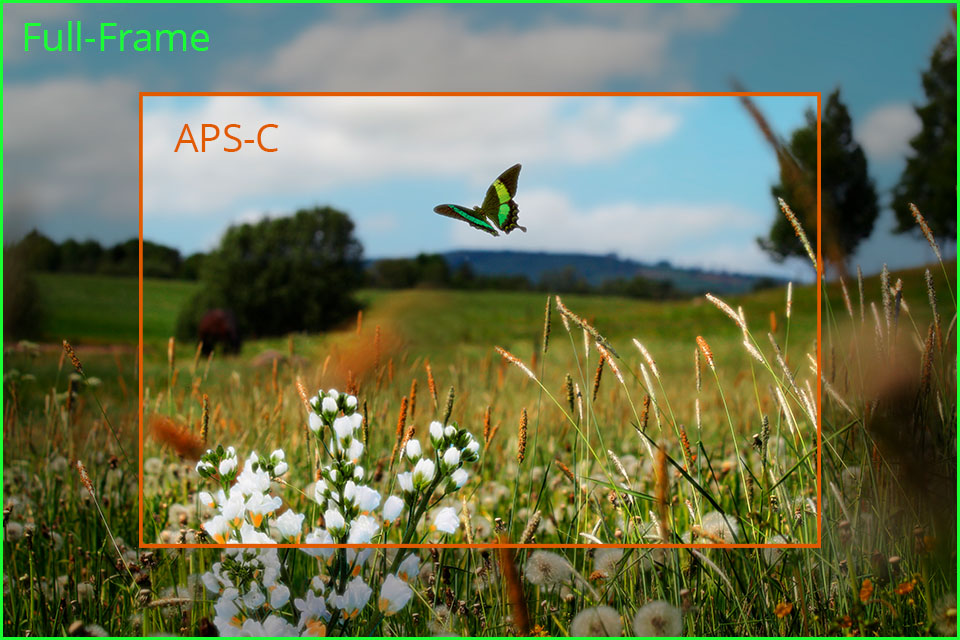
Sensor size. Cameras aimed at professionals and avid hobbyists typically come with either a full-frame sensor or a bit smaller APS-C chip. The APS-C ones are generally more compact and budget-friendly compared to their full-frame counterparts, although they may not be as handy on the go as cameras featuring Four Thirds sensors, like Panasonic cameras and Olympus).
Frame rates. 24fps is commonly chosen for that cinematic vibe, whereas higher frame rates such as 60fps or beyond are favored for smoother motion or mesmerizing slow-motion effects.
| Video Type | Video Type |
|---|---|
|
Narrative Films |
24fps, 30fps |
|
Action/Adventure |
24fps, 60fps |
|
Slow Motion |
60fps, 120fps, 240fps |
|
Sports |
60fps, 120fps |
|
Live Events |
30fps, 60fps |
|
Broadcast Television |
30fps, 60fps |
|
YouTube/Vlogging |
24fps, 30fps, 60fps (depends on style) |
|
Cinematic Footage |
24fps, 30fps |
|
Time-Lapse |
Variable (1fps to 30fps or more) |
Autofocus. In my opinion, what sets the continuous auto-focus feature in the newest Canon mirrorless cameras for videography, like the R5, apart is its smooth cinematic focus transitions and its ability to keep the subject clear and sharp.
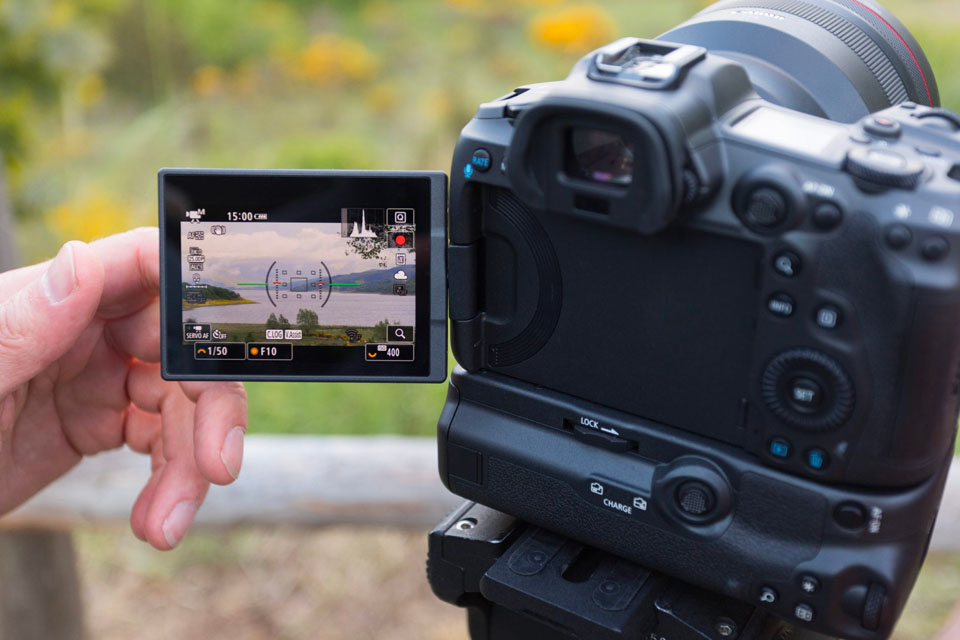
LCD screen. A large, high-resolution display that can tilt in various directions is ideal for framing your shots and reviewing your footage.
Additional features. When it comes to video capabilities, if you're looking for a mirrorless camera for beginners, choose a camera that has a weather-sealed design to protect it from external impact. In addition, having in-body image stabilization can help to keep your footage steady without the need for a tripod.
| Sony A7S III | Canon EOS R7 | Fujifilm X-H2S | |
|---|---|---|---|
|
Best for |
Cinematic Low-light Documentary |
Event coverage Vlogging General use |
Cinematic Artistic |
|
Video Resolution |
4K/120p |
4K/60p |
6.2K/30P |
|
ISO |
80 - 102,400 |
100 - 51,200 |
80 - 25,600 |
|
Low-Light |
✔️ |
✔️ |
✔️ |
|
Image Stabilization |
✔️ |
✔️ |
✔️ |
|
Battery Life |
60 min |
90 min |
60 min |
After putting the top three cameras through tests, it became clear that each one has its own strengths, perfectly suited for various video styles and personal preferences. These cameras meet the specific needs of videographers, addressing both the creative and technical aspects of the craft.
The Sony A7S III is a great choice if you are searching for a reliable low-light video camera. Its outstanding performance in low-light situations, combined with high frame rates, makes it a fantastic option for those who love creating cinematic and documentary-style videos.
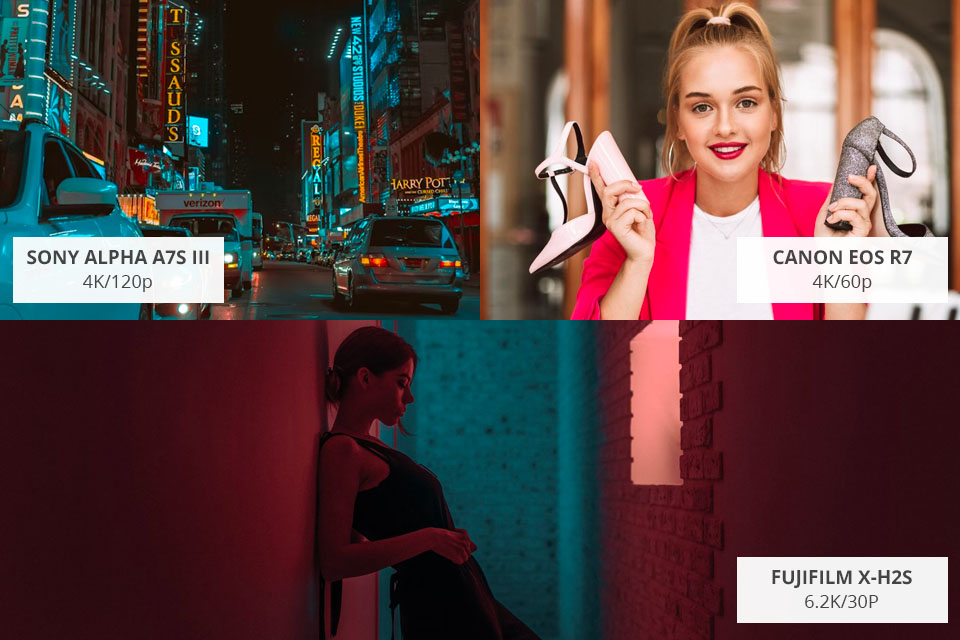
The Canon EOS R7 brags about its impressive 4K resolution and a dependable autofocus system. It is a terrific choice for shooting events, vlogging, and other standard video projects.
The Fujifilm X-H2S caters to filmmakers aiming for artistic expression through special film simulations and Fujifilm's unique color science. It's particularly fitting for those fond of cinematic and artistic video styles.
Mirrorless models bring a fusion of versatility and innovation to video creation. Their compact size, advanced features, and interchangeable lenses empower filmmakers to capture breathtaking visuals with professional-grade quality and creative finesse.
Absolutely! The large sensors in many mirrorless models allow for shallow depth of field and stunning bokeh, enabling filmmakers to create cinematic shots with captivating foreground-background separation and artistic visual appeal.
The biggest difference between mirrorless vs DSLR cameras is how they handle focus and exposure. Mirrorless models use their image sensor to provide a preview of what the final image will look like before taking the shot, while DSLRs use a mirror to reflect light up into an optical viewfinder. When it comes to shooting videos, mirrorless models usually take the lead because of their advanced technology, improved autofocus systems, and compact design. They are easier to carry around for on-the-go filming. However, the particular camera model and its features are more important than the overall category. There are some DSLRs for video with remarkable capabilities that can surpass mirrorless models.
Zoom lenses: These lenses appeal to users with flexibility in different shooting scenarios. Opt for lenses with a constant aperture across the zoom range to have consistent exposure. Prime lenses: These fixed focal length lenses often come with wider apertures, enhancing performance in low-light conditions and granting greater creative control over depth of field. They work well even when attached to the cheapest full-frame cameras. Cine lenses: Tailored specifically for video production, these lenses boast geared focus rings for seamless manual focusing, consistent aperture adjustments, and minimal focus breathing.